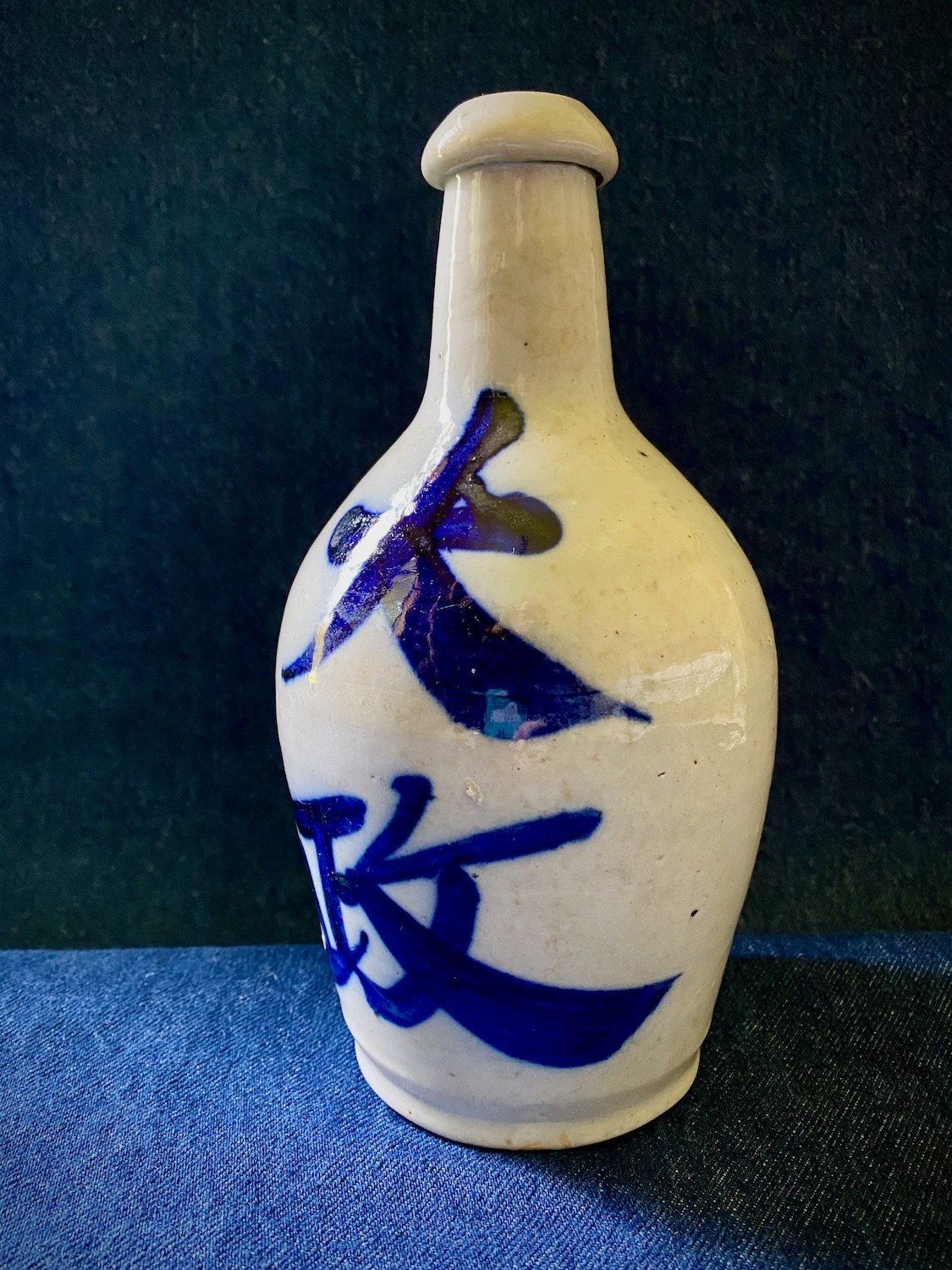 Image 1 of 4
Image 1 of 4

 Image 2 of 4
Image 2 of 4

 Image 3 of 4
Image 3 of 4

 Image 4 of 4
Image 4 of 4





Kayoi-tokurri (通い徳利)
A kayoi tokurri (“commuter’s sake bottle”) is a traditional Japanese sake bottle from the early Showa period (early 20th century). It was used to buy sake (or shochu liquor, or soy sauce) at a shop, to be carried home. It usually belonged to the shop, the name of which was conspicuously written on the side. A rope was tied around the neck for ease of carrying. As this was a working class tradition, such bottles were also called binbo-daro, or “poor man’s sake bottle”. Presumably, wealthy folks would send a servant out with their own tokurri! We like the vibrant ultramarine blue lettering. Note the chip on the base (which does not compromise the bottle’s ability to hold sake).
Here is a haiku by Kobayashi Issa (小林 一茶 1763 - 1828), one of the great haiku poets of old Japan:
harusame ya binboodaru no ume no hana
spring rain -
some plum blossoms
in a poor man's sake flask
8.5” x 4.25”
A kayoi tokurri (“commuter’s sake bottle”) is a traditional Japanese sake bottle from the early Showa period (early 20th century). It was used to buy sake (or shochu liquor, or soy sauce) at a shop, to be carried home. It usually belonged to the shop, the name of which was conspicuously written on the side. A rope was tied around the neck for ease of carrying. As this was a working class tradition, such bottles were also called binbo-daro, or “poor man’s sake bottle”. Presumably, wealthy folks would send a servant out with their own tokurri! We like the vibrant ultramarine blue lettering. Note the chip on the base (which does not compromise the bottle’s ability to hold sake).
Here is a haiku by Kobayashi Issa (小林 一茶 1763 - 1828), one of the great haiku poets of old Japan:
harusame ya binboodaru no ume no hana
spring rain -
some plum blossoms
in a poor man's sake flask
8.5” x 4.25”